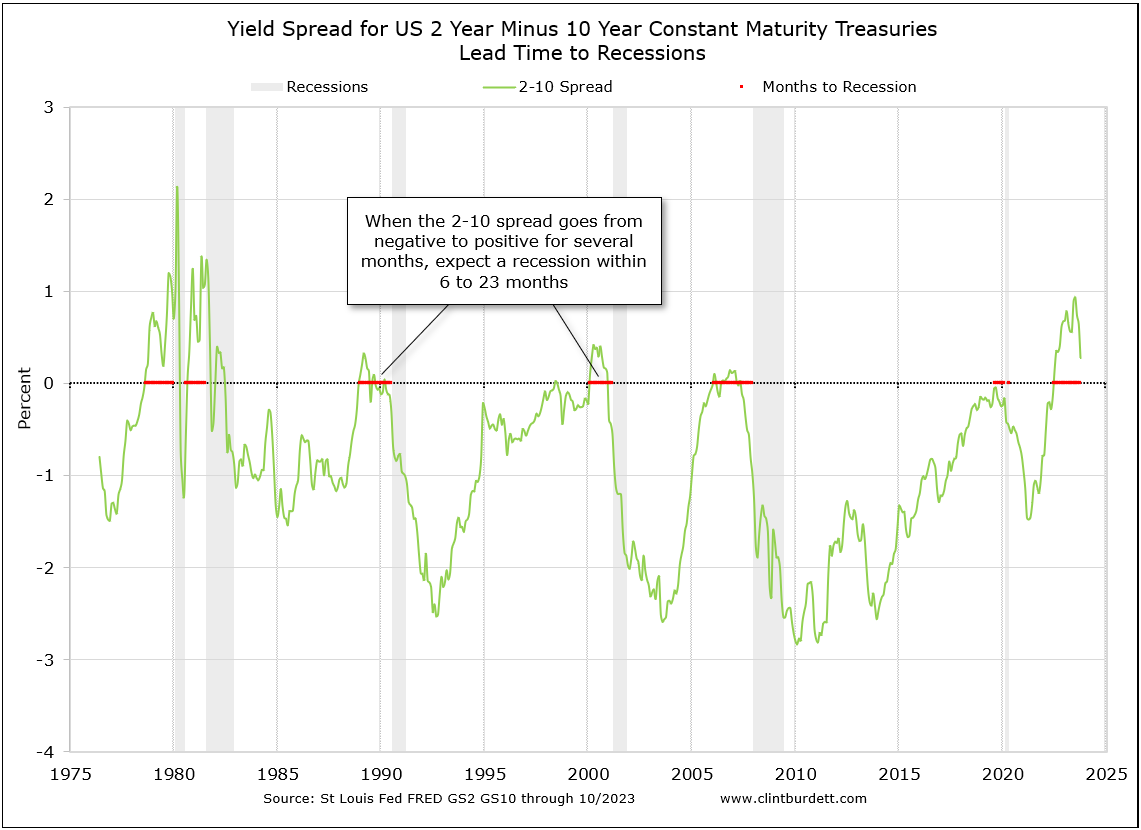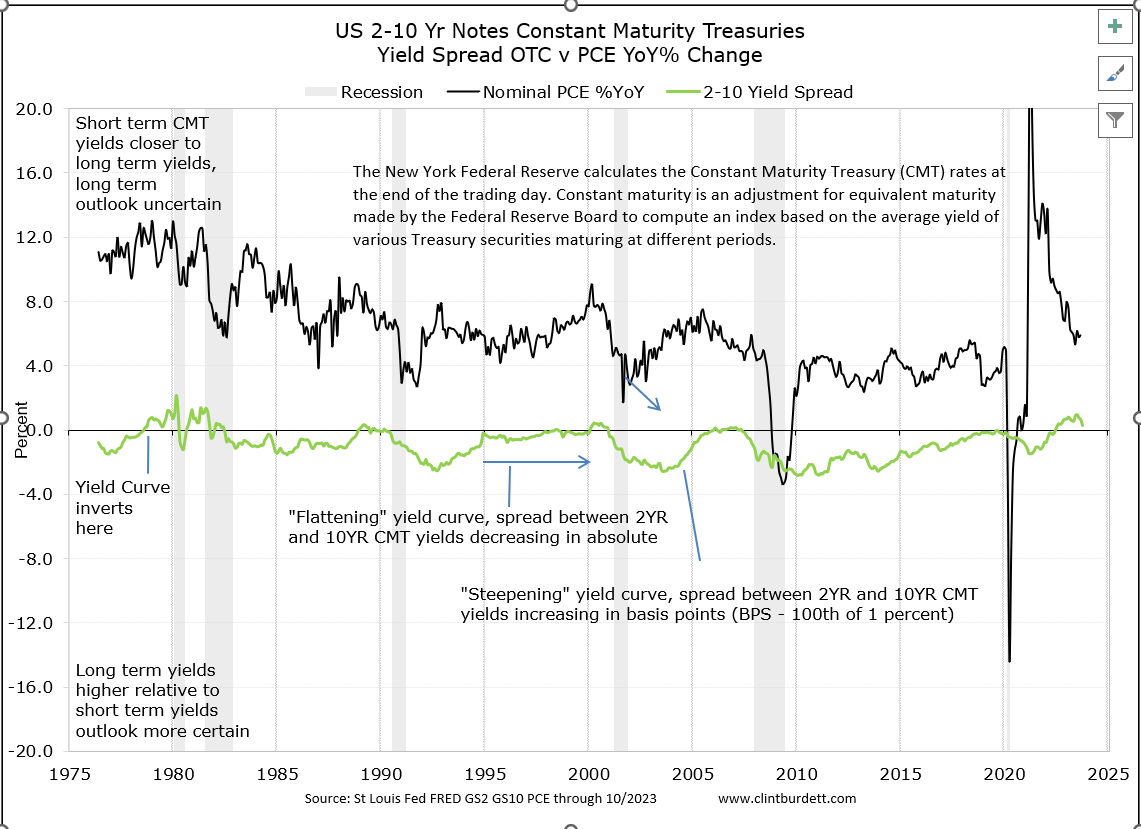Watching the Economy by Clint Burdett CMC® FIMC
Late August 2010
Late August 2010: 2-10 spread not signalling a double dip, rather a holding pattern (a wonkish explanation) - Charts updated to date
By Clint Burdett CMC®
Worried about a double dip, folks are still seeking a safe haven in Treasuries

Click chart for larger image - updated monthly
Historically, when 2 year US Security yields are greater than 10 year Security yields (2 year yield - 10 year yield > 0), a recession starts 10 months to 33 months later.
When 2 year yields move aggressively above 10 year yields, a recession starts about 16 months later. In the chart above, we don't see any indication that is near term.
Shorter term borrowing is used to manage liquidity, longer term for capital investments or cash flow. Short term rates must rise when the Government finds it is harded to attract short term investors rather than when long term investors are seeking a safe haven. The Federal Funds Rate has a significant influence on short term rates and thereby inflation as the Feb buys or sells to maintain their target. Short term rates are rock bottom now.
Many report the 10 - 2 spread rather than the 2 - 10. On the chart below, see how Personal Consumption Expenditures (PCE) percent change from pervious year and the 2 - 10 spread mirrors it (red arrows, chart below); as personal spending increases YoY, the 2 yr yield (short term rate) usually rises relative to the 10 yr yield (long term). That seems counter-intuitive; more personal spending means more revenue for governments (sales, income taxes, license, fees, you name it), so less short term borrowing, right? Well no, at the same time short term investors are harder to attract as spending and inflation picks up. Why, because as bond investors usually take a long term view, they try to lock in long term rates for the spread and thereby make Government borrowing for the short term for liquidity more expensive with fewer buyers. Today, short term rates are not rising; the Fed is not worried about inflation. When personal spending finally starts to decline, the Fed then forces short term rates down to pull all rates down to stimulate the economy. But, right now they cannot cut much more. None of today's leadership has personal experience in a Great Recession, we just don't know what is going to happen next year.
The question to consider: has Federal Reserve FOMC policy keeping short term rates near zero when inflation is benign distorted this traditional leading indicator for a recession?
2-10 Spread Not Yet Reverting to Mean - We're Still in a Holding Pattern Seeking a Safe Haven
 Click to see larger image - updated monthly
Click to see larger image - updated monthly
On 8/19 the spread between 2 yr and 10 yr Treasuries was 209 bps. Basis points (bps) are 1/100 of 1 %. On 8/26, the spread was 199. With 2 yr rate about as low as it can go, the 10 yr yield are trending down as folks rush to its safe haven, too many buyers, so the 2-10 spread is narrowing, reverting to mean. Bond values move inversely to yields (and the Fed and Treasury benefit with lower yields!).
If inflation does not roar back, today's 2-10 spread is still superb: borrow short term and reinvest long term for a great return. But, when inflation returns, all yields will rise; folks who bought late will either lose principal to re-balance when they sell or lose purchasing power if they hold. Those who bought six months ago will sell to cash out quickly to preserve their profit (bond values rise as yields fall). That is the media concern du jour and when will inflation return is the uncertainty - the worry is deflation.
Until inflation ranges between 1.5% and 2%, the Federal Reserve Board's theoretical target, today's wide 2-10 spread benefit caused from the 10 year yield is ephemeral: it increases uncertainty, increases hesitation, encourages rush to a safe haven, but does not encourage investments in a long term opportunities.
We are in a holding pattern squeezing out returns from market moves, not entrepreneurs creating new business and jobs.
See The Economist: A Bull Market in Pessimism, Inside the FOMC by Narayana Kocherlakota - President, Federal Reserve Bank of Minneapolis, Robert Shiller on a Double Dip - Confidence
You may not reprint this article for sale without my expressed written permission.
You may post or reprint this article to educate as long as you credit my work
and provide a link to www.clintburdett.com
|
|